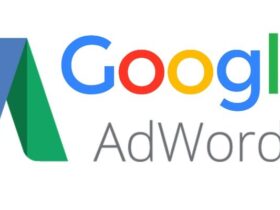Quality Score is one of the most vital metrics in Google Ads because it immediately affects how much you pay per click. Data from Wordstream suggests that sincerely growing your Quality Score from 5 to 7 would result in a lower CPC of 28.6%.

Despite its importance, it’s been historically tough for music.
Although Google brought historical Quality Score metrics back in 2017, It’s no longer feasible to look at each dday’sfluctuations in Quality Score without using an external API primarily based device. Martin Roettgerding wrote a brilliant script again in 2006 that lets advertisers to music Quality Score. Google has since released an improved Quality Score record permitting advertisers to see ad relevance, expected CTR, and landing web page experience, which we’ve wanted to tune.
So, the builders who work at Clicker, my corporation, constructed this script that will help you monitor your Quality Score every day so that you can gauge the effect of your optimizations. It further builds on Martin Roettgerding’s script, permitting you to track the daily performance of the individual elements that make up the overall Quality Score, together with anticipated CTR, advert relevance, and landing web page enjoyment.
How the script works
When the script runs, it creates tabs within the Google Sheet.
The dashboard consists of 8 graphs that will let you see how your Quality Score is appearing. The first chart indicates the proportion of key phrases in each Quality Score band (1 to 10), as shown below. It also informs you about quality scores on a primary day when the script runs in blue so you can examine how your quality score has been modified. The 2d chart plots impact-weighted Quality Score daily, permitting you to see how it fluctuates. The three charts on the left side then show how many key phrases are both above average, average, or beneath average, with a separate graph for each of the three parts that make up the Quality Score (Ad relevance, landing web page experience, and predicted CTR) as shown beneath.
There are three further charts on the proper-hand side of the plot influence-weighted Quality Score expected CTR, Ad relevance, and touchdown web page revealed on a scale of one to 3. A rating of three might indicate that 100% of your impressions would have come from keywords with above-average expected CTR. On the opposite stop of the spectrum, a score of 1 would suggest that 100 of your impressions could have come from keywords with an anticipated CTR below average.
The records sheet creates a new statistics point each day and reports the subsequent metrics: Percentage of keywords that have above common, common, or under average anticipated CTR, landing page enjoy, and ad relevance. Impressions weighted rating among 1 to three for expected CTR, touchdown web page enjoys, and ad relevance.
Percentage of keywords that fall into each Quality Score 1-10.
Impression weighted Quality Score throughout all the accounts.
Account for common Quality Score via the number of keywords in every rating. Setting up the script If you’ve never used Google Ads Script before and the code beneath seems scary, don’t panic. You can use a brief manual to help reproduce and paste the code below into the proper location within Google Ads. Before you run the script, you must exchange several factors.
Go to Google Sheets, create a new record, and duplicate the URL.
Paste the URL of the sheet into line 17 of the script. When the script runs, it’ll output the facts and charts to the Google Sheet you just installed. Schedule the script to run daily—this may be finished within the fundamental Google Ads script dashboard. Now, the script will run every day and replace the sheet, permitting you to music pinnacle-level Quality Score data and a breakdown of the precise metrics that represent Quality Score daily.











